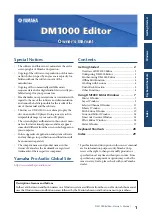
250
Copyright © Acronis, Inc., 2000-2010
6.8.1.2
Acronis Secure Zone Size
Enter the Acronis Secure Zone size or drag the slider to select any size between the minimum and the
maximum ones. The minimum size is approximately 50MB, depending on the geometry of the hard
disk. The maximum size is equal to the disk's unallocated space plus the total free space on all the
volumes you have selected in the previous step.
If you have to take space from the boot or the system volume, please bear the following in mind:
Moving or resizing of the volume from which the system is currently booted will require a reboot.
Taking all free space from a system volume may cause the operating system to work unstably
and even fail to start. Do not set the maximum zone size if the boot or the system volume is
selected.
6.8.1.3
Password for Acronis Secure Zone
Setting up a password protects the Acronis Secure Zone from unauthorized access. The program will
ask for the password at any operation relating to the zone and the archives located there, such as
data backup and recovery, validating archives, resizing and deleting the zone.
To set up a password
1.
Choose
Use password
.
2.
In the
Enter the password
field, type a new password.
3.
In the
Confirm the password
field, re-type the password.
4.
Click
OK
.
To disable password
1.
Choose
Do not use
.
2.
Click
OK
.
6.8.1.4
Result confirmation
The
Result confirmation
window displays the expected partition layout according to the settings you
have chosen. Click
OK
, if you are satisfied with the layout and the Acronis Secure Zone creation will
start.
How the settings you make will be processed
This helps you to understand how creating the Acronis Secure Zone will transform a disk containing
multiple volumes.
Acronis Secure Zone is always created at the end of the hard disk. When calculating the final
layout of the volumes, the program will first use unallocated space at the end.
If there is no or not enough unallocated space at the end of the disk, but there is unallocated
space between volumes, the volumes will be moved to add more unallocated space to the end.
When all unallocated space is collected but it is still not enough, the program will take free space
from the volumes you select, proportionally reducing the volumes' size. Resizing of locked
volumes requires a reboot.
However, there should be free space on a volume, so that the operating system and applications
can operate; for example, for creating temporary files. The program will not decrease a volume
where free space is or becomes less than 25% of the total volume size. Only when all volumes on
the disk have 25% or less free space, will the program continue decreasing the volumes
proportionally.
















































